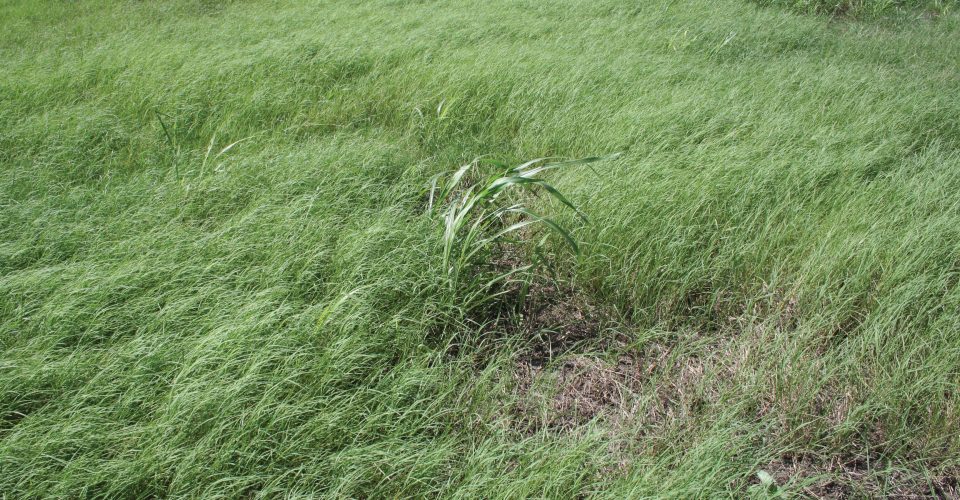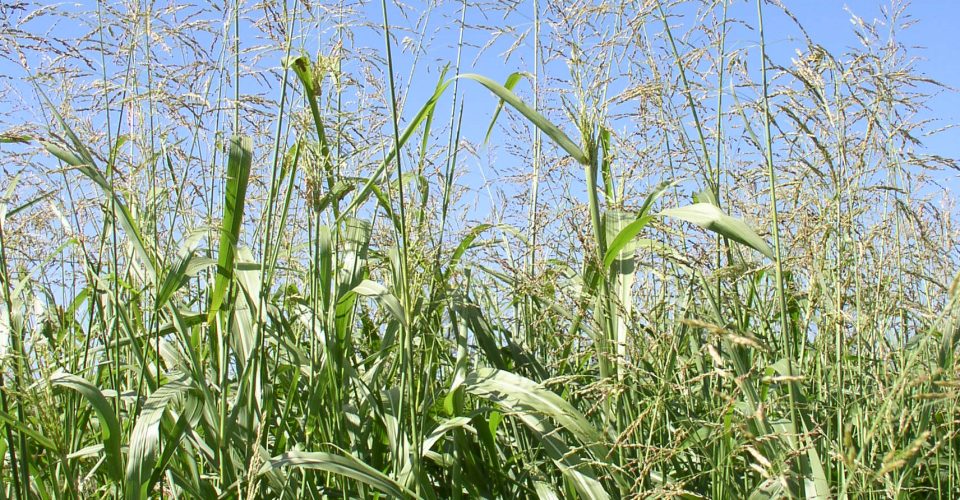Johnsongrass (Sorghum halepense)
Johnsongrass is a tall, vigorous, perennial grass with wide-leaf blades. It was originally imported to the U.S. from Turkey as forage for livestock and erosion control projects. It is widely adapted throughout the southern states and is used for hay and grazing.
- Reproduces from seed and has a very aggressive root system that thrives in a wide variety of soils
- Can often reach a height of more than 6 feet
- Considered an unwanted pest in cultivated fields and hay meadows.
- Seed is used by several species of birds and its dense foliage can provide cover for many species of wildlife
Johnsongrass may be a health hazard to grazing livestock because it can cause prussic acid poisoning during times of stress such as drought, frost or periods of fast growth. It should be avoided during these times, if possible.
Johnsongrass is a sorghum, and may cause a serious health problem known as sorghum cystitis if grazed by horses, so it should be avoided by equines.
Management of Johnsongrass is similar to management of many of the tall grasses because it cannot survive continuous grazing by livestock. It responds well to ground disturbance and can be easily renovated with plowing and nutrient applications. Johnsongrass can also be easily controlled with a timely application of herbicide in areas where it is not wanted.
Editor’s note: Kent Ferguson, retired rangeland management specialist from USDA Natural Resources Conservation Service (NRCS), is providing us with plant identification photo stories to help ranchers identify those forbs, forages and species growing in the pastures. Additional photos provided by USDA NRCS.
Johnsongrass is excerpted from the May 2015 issue of The Cattleman magazine.






